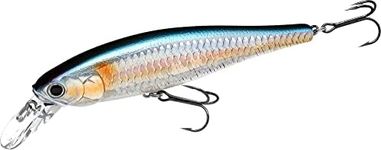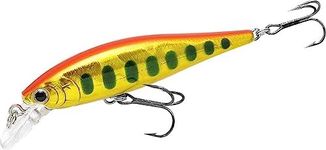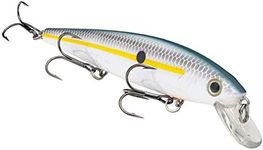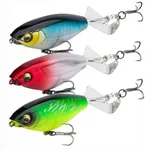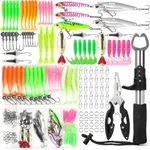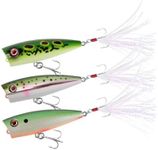Buying Guide for the Best Jerkbaits
Choosing the right jerkbait can significantly enhance your fishing experience. Jerkbaits are a type of fishing lure designed to mimic the erratic movement of a distressed baitfish, making them highly effective for attracting predatory fish. When selecting a jerkbait, it's important to consider several key specifications to ensure you pick the best one for your needs. Understanding these specs will help you make an informed decision and improve your chances of a successful catch.SizeThe size of a jerkbait is crucial because it determines the type of fish you can attract. Jerkbaits come in various sizes, typically measured in inches or millimeters. Smaller jerkbaits (2-3 inches) are ideal for targeting smaller fish species like bass or trout, while larger jerkbaits (4-6 inches or more) are better suited for bigger fish like pike or muskie. Consider the type of fish you are targeting and choose a size that matches their typical prey.
Diving DepthDiving depth refers to how deep the jerkbait can go when retrieved. This is important because different fish species inhabit different water depths. Shallow-diving jerkbaits (0-4 feet) are great for fishing in shallow waters or near the surface, while medium (5-10 feet) and deep-diving jerkbaits (10+ feet) are better for reaching fish that are deeper in the water column. Think about the water body you will be fishing in and the depth at which your target fish are likely to be found.
BuoyancyBuoyancy determines how the jerkbait behaves in the water when you stop retrieving it. There are three main types: floating, suspending, and sinking. Floating jerkbaits rise to the surface when paused, making them ideal for shallow waters and topwater action. Suspending jerkbaits stay at a certain depth, which is useful for targeting fish that are not on the surface or bottom. Sinking jerkbaits sink when paused, allowing you to reach deeper fish. Choose the buoyancy based on the water depth and the behavior of the fish you are targeting.
ColorThe color of a jerkbait can influence its effectiveness, as it needs to resemble the prey fish in the environment. Natural colors like silver, gold, or shad are good for clear water and sunny conditions, as they mimic the appearance of real baitfish. Bright colors like chartreuse or fire tiger are better for murky water or low-light conditions, as they are more visible to fish. Consider the water clarity and light conditions where you will be fishing to select the most appropriate color.
ActionThe action of a jerkbait refers to its movement in the water. Jerkbaits can have different actions, such as tight wobbling, wide wobbling, or erratic darting. The action is important because it mimics the movement of a distressed baitfish, which attracts predatory fish. Tight wobbling actions are subtle and work well in clear water, while wide wobbling and erratic actions are more noticeable and effective in murky water. Think about the water conditions and the behavior of the fish you are targeting to choose the right action.


